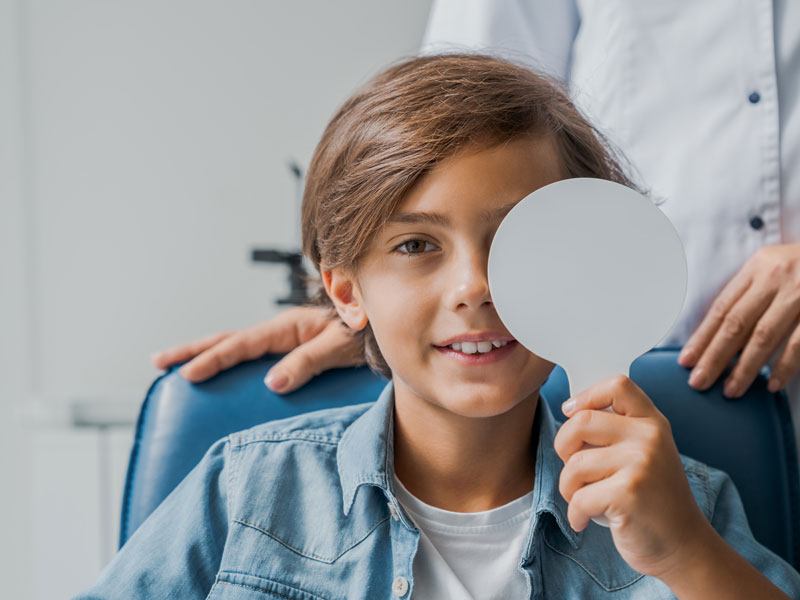It really impacts how children move through the world when their vision isn’t what it could be.
Geoffrey Tufty, a fellowship-trained pediatric ophthalmologist at Sanford Eye Center and Optical in Sioux Falls, South Dakota, treats a variety of pediatric eye issues, from cross-eyes and lazy eyes to blurred vision and retinal problems.
“These are all fairly common in young children and, depending on the severity of an issue, we can often treat these issues with simple measures like glasses,” Dr. Tufty said.
Signs of vision problems in children
Some basic vision problems are easy to spot, especially as children start going to school. A teacher might notice an inability to see the board or squinting during lessons.
“If the eyes aren’t working well together, it can make vision blurry,” Dr. Tufty explains. “And that can easily distract from tasks like learning to read.”
Because vision stops developing between the ages of 7 and 9, the earlier a child’s vision problems can be addressed, the better. If left untreated, vision issues can impact a child far beyond the classroom.
“If a child doesn’t have good visual input, over time the brain will somewhat disengage from the eyes and not develop visual information properly. This could cause their vision to remain poor, even after corrective measures are taken,” Dr. Tufty said.
Screen time and sunglasses
Fortunately, there are ways to prevent vision problems by protecting a child’s eyes as they grow and develop. Limiting screen time to 60 minutes or less can prevent eye strain and sunglasses can protect their eyes from harmful UV rays.
“It’s good to get kids into the habit of wearing sunglasses to shield their eyes, because long-term exposure to ultraviolet light can lead to cataracts and macular degeneration,” Dr. Tufty said.
And while the start of the school year is a great time to have a child’s vision checked, Dr. Tufty wants parents to feel empowered to bring their children in sooner if they see any problems.
“If you notice any signs — from one of their eyes drifting to them sitting closer to the TV — you should consider taking your child in to see your family eye doctor,” Dr. Tufty said. “Especially if there’s a family history of issues like a lazy eye, the earlier the issue is treated the better.”
Pediatric vision screenings are available at all Sanford Health clinics and can be rolled into any wellness visit.
More stories
- An optometrist can help spot health issues
- What to know about baby’s first eye appointment
- Well-child checks important for children of all ages
…
Posted In Back to School, Children's, Eye Care, Health Information
